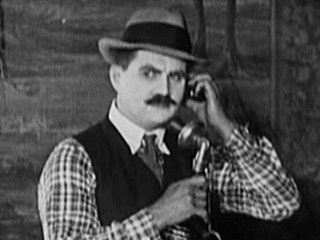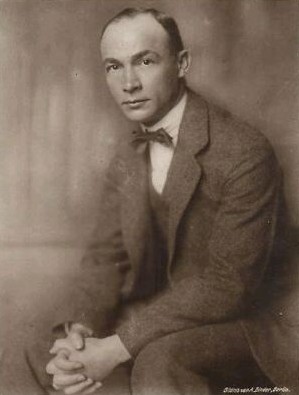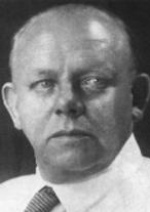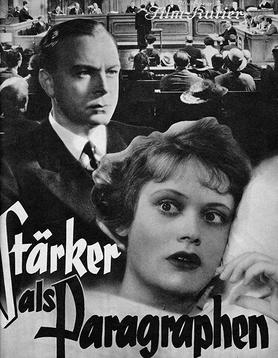Related Research Articles

Attila Hörbiger was an Austrian stage and movie actor.

Otto Heller, B.S.C. was a Czech cinematographer long resident in the United Kingdom. He worked on more than 250 films, including Richard III (1955), The Ladykillers (1955) and Peeping Tom (1960).

Otto Hugo Fries was an American film actor. He appeared in more than 120 films between 1920 and 1938.

Otto Treßler, also Otto Tressler, was a German-Austrian stage and film actor. He appeared in more than 40 films between 1915 and 1962. He was born in Stuttgart, Germany and died in Vienna, Austria. He was a close friend to Archduchess Maria Josepha of Austria.

Paul Otto Schlesinger was a German film actor and director. Born in Berlin, he began a qualification as a retail merchant and made his actor's debut at the age of 17. Otto worked at Theaters in Halle, Wiesbaden and Hanover before he returned to Berlin about 1906.

Friedrich Martin Adalbert Kayssler, also spelled Kayßler, was a German theatre and film actor. He appeared in 56 films between 1913 and 1945.

Herman Bing was a German-American character actor. He acted in more than 120 films and many of his parts were uncredited.

Paul Hörbiger was an Austrian theatre and film actor.

Joseph Bridger Cawthorn was an American stage and film comic actor.

Otto Wallburg was a German actor and Kabarett performer. He was a prolific film actor during the late silent and early sound era.
Paul Anton Heinrich Rehkopf was a German actor.
Gustav Püttjer was a German film actor who appeared in around 150 feature films between 1927 and 1959. He largely played character parts. After the Second World War he settled in East Germany appearing in the films of the state-controlled company DEFA.
Franz Weihmayr was a German cinematographer who worked on over 80 films between 1924 and 1964. He was one of the leading German cinematographers of the Nazi era, working on a number of Zarah Leander films and the 1935 propaganda documentary Triumph of the Will. His marriage to Ada Tschechowa ended in divorce. After the Second World War, Weihmayr worked in West German cinema, including rubble films such as Love '47.

Otto Hunte was a German production designer, art director and set decorator. Hunte is considered one of the most important artists in the history of early German cinema, mainly for his set designs on the early silent movies of Fritz Lang. A working relationship with fellow designers Karl Vollbrecht and Erich Kettelhut defined his early career. Hunte's architectural designs are found in many of the period's most important films including Dr. Mabuse the Gambler, Die Nibelungen (1924), Metropolis (1927) and Der blaue Engel. Hunte subsequently worked as one of the leading set designers during the Nazi era. After World War II, he was employed by the East German DEFA studios.
Otto Erdmann was a German art director. During the 1920s and 1930s he often worked alongside Hans Sohnle.

Silence in the Forest is a 1929 German silent drama film directed by William Dieterle and starring Dieterle, Rina Marsa, and Petta Frederik. It was shot at the Babelsberg Studios in Berlin. The film's sets were designed by the art directors Otto Guelstorff and Gabriel Pellon. It was made by the German subsidiary of Universal Pictures and was the first of several film versions of the novel of the same title by Ludwig Ganghofer.

Rustle of Spring is a 1929 German silent romance film directed by William Dieterle and starring Dieterle, Lien Deyers and Julius Brandt. It was made by the German subsidiary of Universal Pictures and shot at the Halensee Studios in Berlin. The film's sets were designed by the art directors Otto Guelstorff and Ernst Stern.

Stronger Than Regulations is a 1936 German mystery film directed by Jürgen von Alten and starring Paul Hartmann, Karl Hellmer and Manja Behrens. It was shot at the Grunewald Studios in Berlin. The film's sets were designed by the art directors Otto Guelstorff and Hans Minzloff.

The Glass Ball is a 1937 German drama film directed by Peter Stanchina and starring Albrecht Schoenhals, Sabine Peters, and Hilde von Stolz.

Hell of Love is a 1926 German silent drama film directed by Bruno Rahn and starring Vivian Gibson, Erich Kaiser-Titz, and William Dieterle.
References
- ↑ Fox p. 257